Speaker
Description
In structure analysis of condensed matter by way of X-ray scattering experiments
precise treatment of background intensity is usually negligible so long as crystals
are probed, as their structure information is concentrated in sharp, highly intense
Bragg-reflexes. In less ordered systems such as liquids, glasses and amorphous
solids in general these sharp reflexes are absent and the scattered intensity
carrying the structure information is spread continuously along the diffraction
angle and mixes with the background.
In order to draw information from such scattering experiments a meticulous
analysis and extensive reduction of background intensity is necessary. Accordingly
great effort is undertaken to grasp and separate the various contributions to
background intensity. [1] This is especially relevant when the data is to be used
as constraint in the modeling of investigated systems, e.g. by RMC Simulations.
Part of this unwanted background is intensity scattered by air, as it is not
always feasible to evacuate the experimental setup. The air scattered intensity
is experimentally only directly accessible in a setup without an absorbing and
scattering sample present. Similarly, this intensity is not equal to the air
scattering contribution in presence of a sample, e.g. due to the sample’s absorption
of primary intensity. Therefore it is only a crude approximation to use the
measured air scattering intensity for background correction directly.
In this ongoing work, a model is derived to predict air scattered intensity in
presence of the sample for a typical experimental environment at a synchrotron
beamline. The model is built using the Thomson scattering equation and
atomic form factors as theoretical foundation. From the experimental setup a
general geometric model of the beam path is deduced. Furthermore setup-specific
features in the beam path are regarded as examples that may heavily influence
the measured intensity curves, most prominently the shadow of a beam stop cast
onto an area detector.
References
[1] H. E. Fischer, A. C. Barnes and P. S. Salmon, Reports on Progress in Physics
69, 233 (2006)

